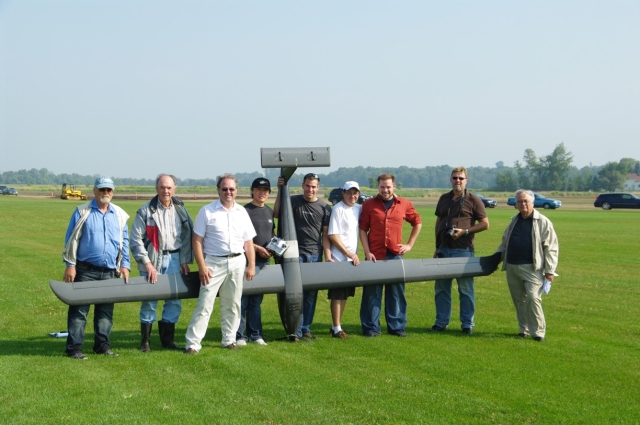 Brican Flight Systems Inc. is set to reveal the TD100 series of advanced Unmanned Aircraft Systems at the Ontario Centres of Excellence’s Discovery 2012 conference held May 14 and 15 at the Metro Toronto Convention Centre.
Brican Flight Systems Inc. is set to reveal the TD100 series of advanced Unmanned Aircraft Systems at the Ontario Centres of Excellence’s Discovery 2012 conference held May 14 and 15 at the Metro Toronto Convention Centre.
“Our mission is to deliver superior quality digital information, providing scientists a “unique perspective” into their fields of research through a distinct, safe and affordable aerial platform that can gather a variety of remotely sensed data,” said Brian McLuckie, president of Brican Flight Systems. “This is an exciting time for Brican and the Ontario aerospace industry as we strive to gain market share and establish a new leadership position in global markets for UAS technology.”
The technological advantage of the Brican aircraft lies in its low weight of 35 pounds and useful payload of 20 pounds, while staying within the Transport Canada regulated maximum weight limits of 55 pounds. Sensor payloads are accommodated within the aircraft structure that can include: high resolution digital still imagers, HD video cameras, hyper spectral scanners, infra-red cameras, weather sensors and magnetometers.
Its light weight and advanced aerodynamic design make the Brican TD100 extremely efficient. Powerplant variants include a multi-fuel engine (“M” model) that uses a mere 0.4 liters of fuel per hour, permitting the UAV to fly in excess of 25 uninterrupted hours, exceeding the flight times of traditional research aircraft.
An electrically powered version (“E” model) can currently stay aloft for up to 2.5 hours on a single charge. This electric version will be used to evaluate new fuel cell technologies, potentially extending flight times and resulting in a lighter carbon footprint. Near silent while in operation, the Brican TD100 is able to fly as low as 300 feet, lower than conventional aircraft.
These long endurance, low altitude and quiet operational characteristics combine to allow the Brican TD100 to capture and deliver high resolution data and images, perfectly suited for unobtrusive wildlife surveillance.
“The Brican TD100 team represents over 75 years of combined aviation expertise,” says McLuckie. “Our team has built the TD100 UAV to be very cost competitive while being able to deliver superior mission-critical results.”
The TD100’s first official mission will be conducted in June 2012 when the operations team, working with Dr. David Bird of McGill University and assisted by funding from the Richard Molson Foundation, will conduct wildlife studies on Canadian Military Base Goose Bay, Labrador where they will capture digital images compiling caribou herd counts and helping to establish the welfare of the animals.
Source: Press Release
